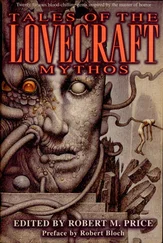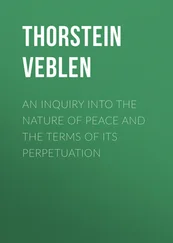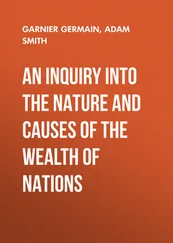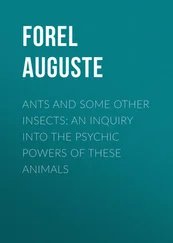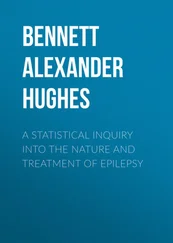Robert Pirsig - Lila. An Inquiry Into Morals
Здесь есть возможность читать онлайн «Robert Pirsig - Lila. An Inquiry Into Morals» весь текст электронной книги совершенно бесплатно (целиком полную версию без сокращений). В некоторых случаях можно слушать аудио, скачать через торрент в формате fb2 и присутствует краткое содержание. Жанр: Современная проза, на английском языке. Описание произведения, (предисловие) а так же отзывы посетителей доступны на портале библиотеки ЛибКат.
- Название:Lila. An Inquiry Into Morals
- Автор:
- Жанр:
- Год:неизвестен
- ISBN:нет данных
- Рейтинг книги:3 / 5. Голосов: 1
-
Избранное:Добавить в избранное
- Отзывы:
-
Ваша оценка:
- 60
- 1
- 2
- 3
- 4
- 5
Lila. An Inquiry Into Morals: краткое содержание, описание и аннотация
Предлагаем к чтению аннотацию, описание, краткое содержание или предисловие (зависит от того, что написал сам автор книги «Lila. An Inquiry Into Morals»). Если вы не нашли необходимую информацию о книге — напишите в комментариях, мы постараемся отыскать её.
Lila. An Inquiry Into Morals — читать онлайн бесплатно полную книгу (весь текст) целиком
Ниже представлен текст книги, разбитый по страницам. Система сохранения места последней прочитанной страницы, позволяет с удобством читать онлайн бесплатно книгу «Lila. An Inquiry Into Morals», без необходимости каждый раз заново искать на чём Вы остановились. Поставьте закладку, и сможете в любой момент перейти на страницу, на которой закончили чтение.
Интервал:
Закладка:
And yet there in the middle of this Lila Jungle are ancient prehistoric ruins of past civilizations. You could dig into those ruins like an archaeologist layer by layer, through regressive centuries of civilization, measuring by the distance down in the soil, the distance back in time.
That was an intriguing idea. You could structure a whole analysis around this one person, interview her, find out what her values were and then show the entire metaphysics in terms of one specific case… This whole metaphysics was crying for something to bring it down to earth. He could ask her questions all the way to Florida.
He thought about it for a while.
It would be an ideal interviewing situation.
What could she tell him, though? Those patterns might be there but she doesn’t know what they are. She’d just sit there and tell him about her typing and her head-boat and all the different kinds of food she likes, and complain about the coffee and he wouldn’t get anything. Some trip that would be.
Something else sounded wrong too. It was too contrived, too full of objective observational stuff. It ignored the whole Dynamic aspect. There is always this open end of Dynamic indeterminacy. It would be impossible to predict anything from what she said.
Also, she didn’t think much of him. She probably wouldn’t tell him anything. Just like the Indians and the objective anthros.
Dusenberry should be here. He could get it out of her. All I’m good for is theory, Phædrus thought.
But the theory was OK. Lila is composed of static patterns of value and these patterns are evolving toward a Dynamic Quality. That’s the theory, anyway. She’s on her way somewhere, just like everybody else. And you can’t say where that somewhere is.
The theory had arrived in his mind several months ago with the statement, All life is a migration of static patterns of quality toward Dynamic Quality. It had been boiling around in his mind ever since.
In traditional, substance-centered metaphysics, life isn’t evolving toward anything. Life’s just an extension of the properties of atoms, nothing more. It has to be that because atoms and varying forms of energy are all there is. But in the Metaphysics of Quality, what is evolving isn’t patterns of atoms. What’s evolving is static patterns of value, and while that doesn’t change the data of evolution it completely up-ends the interpretation that can be given to evolution.
Historically this assumption by a subject-object metaphysics that all the world is composed of substance put a strain on the Theory of Evolution right from its beginning. At the time of its origin it wasn’t yet understood that at the level of photons and electrons and other small particles the laws of cause and effect no longer apply; that electrons and photons simply appear and disappear without individual predictability and without individual cause. So today we have as a result a theory of evolution in which man is ruthlessly controlled by the cause-and-effect laws of the universe while the particles of his body are not. The absurdity of this seems to be neglected. The problem doesn’t lie in anyone’s department. Physicists can ignore it because they are not concerned with man. Social scientists can ignore it because they are not concerned with subatomic particles.
So although modern physics pulled the rug out from under the deterministic explanation of evolution many decades ago, it has survived by default because no other more plausible explanation has been available. But right from the beginning, substance-caused evolution has always had a puzzling aspect that it has never been able to eliminate. It goes into many volumes about how the fittest survive but never once answers the question of why.
This is the sort of irrelevant-sounding question that seems minor at first, and the mind looks for a quick answer to dismiss it. It sounds like one of those hostile, ignorant questions some fundamentalist preacher might think up. But why do the fittest survive? Why does any life survive? It’s illogical. It’s self-contradictory that life should survive. If life is strictly a result of the physical and chemical forces of nature then why is life opposed to these same forces in its struggle to survive? Either life is with physical nature or it’s against it. If it’s with nature there’s nothing to survive. If it’s against physical nature then there must be something apart from the physical and chemical forces of nature that is motivating it to be against physical nature. The Second Law of Thermodynamics states that all energy systems run down like a clock and never rewind themselves. But life not only runs up, converting low energy sea-water, sunlight and air into high-energy chemicals, it keeps multiplying itself into more and better clocks that keep running up faster and faster.
Why, for example, should a group of simple, stable compounds of carbon, hydrogen, oxygen and nitrogen struggle for billions of years to organize themselves into a professor of chemistry? What’s the motive? If we leave a chemistry professor out on a rock in the sun long enough the forces of nature will convert him into simple compounds of carbon, oxygen, hydrogen and nitrogen, calcium, phosphorus, and small amounts of other minerals. It’s a one-way reaction. No matter what kind of chemistry professor we use and no matter what process we use we can’t turn these compounds back into a chemistry professor. Chemistry professors are unstable mixtures of predominantly unstable compounds which, in the exclusive presence of the sun’s heat, decay irreversibly into simpler organic and inorganic compounds. That’s a scientific fact.
The question is: Then why does nature reverse this process? What on earth causes the inorganic compounds to go the other way? It isn’t the sun’s energy. We just saw what the sun’s energy did. It has to be something else. What is it?
Nowhere on the pages of all that he had read about evolution did Phædrus see any answer. He knew of theological answers, of course, but these aren’t supported by scientific observation. Evolutionists, in their reply, simply say that in the scientific observation of the facts of the universe no goal or pattern has ever appeared toward which life is heading.
This last statement so neatly sweeps the whole matter under the carpet one would never guess that it was of much concern to evolutionists at all. But a reading of the early history of the theories of evolution shows this is not true. The first major evolutionist, who was not Darwin but Jean Baptiste Lamarck, maintained that all life was evolving toward perfection, a synonym for Quality. Alfred Wallace, who forced Darwin to publish by independently arriving at an almost identical theory, also maintained that natural selection was not enough to account for the development of man. After Darwin many others continued to deny the goallessness of life.
Phædrus had found a good summary of the entire matter in a Scientific American article by Ernst Mayr.
Those who rejected natural selection on religious or philosophical grounds or simply because it seemed too random a process to explain evolution continued for many years to put forward alternative schemes with such names as orthogenesis, nomogenesis, aristogenesis or the Omega Principle of Teilhard de Chardin, each scheme relying on some built-in tendency or drive toward perfection or progress. All these theories were finalistic; they postulated some form of cosmic teleology or purpose or program.
The proponents of teleological theories, for all their efforts, have been unable to find any mechanism (except supernatural ones) that can account for their postulated finalism. The possibility that any such mechanism can exist has now been virtually ruled out by the findings of molecular biology.
Читать дальшеИнтервал:
Закладка:
Похожие книги на «Lila. An Inquiry Into Morals»
Представляем Вашему вниманию похожие книги на «Lila. An Inquiry Into Morals» списком для выбора. Мы отобрали схожую по названию и смыслу литературу в надежде предоставить читателям больше вариантов отыскать новые, интересные, ещё непрочитанные произведения.
Обсуждение, отзывы о книге «Lila. An Inquiry Into Morals» и просто собственные мнения читателей. Оставьте ваши комментарии, напишите, что Вы думаете о произведении, его смысле или главных героях. Укажите что конкретно понравилось, а что нет, и почему Вы так считаете.

